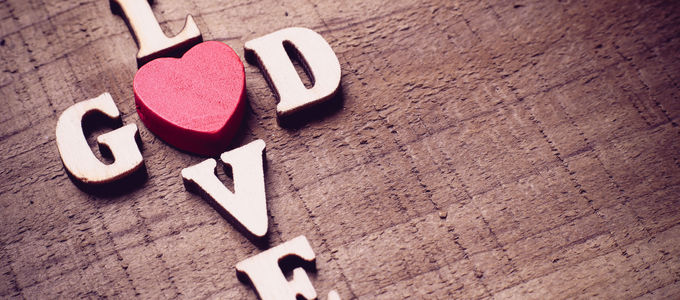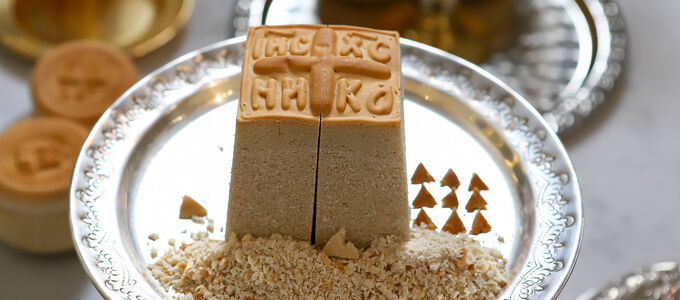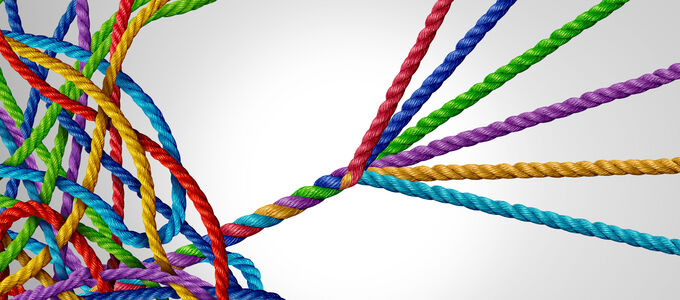
Seven, three, or two: how many sacraments are there actually? Not even all the Christian denominations are in agreement with themselves when it comes to that question. But there is one point of intersection which all of them do acknowledge—almost all of them, that is.
“Holy Scripture acknowledges only one sacrament, and that is Christ the Lord Himself.” With this provocative statement, the Protestant Luther found himself landing in almost exactly the same spot where the arch-Catholic Augustine had been about a millennium before, namely with Jesus as the primordial sacrament. But otherwise, he was quite at odds with the prevailing doctrine of the sacrament.
Between minorem and maiorem
Even the Catholic Church took quite a long time to commit to a firm decision on the matter. Although in practice, the church had already begun dispensing seven sacraments in the twelfth century, it was only the merger with a number of smaller Eastern Churches that made this official theory—that is, doctrine—at the Council of Florence in 1439.
Since then, Catholic tradition has definitively acknowledged the following as sacraments: Baptism (with water), the Eucharist (Holy Communion), Confirmation/Chrismation (a reinforcement of the Holy Spirit), Confession (penance), Marriage, Holy Orders (for example, consecration to the diaconate, priesthood, or episcopate), and Anointing of the Sick.
These sacraments can be grouped in accordance with various aspects, for example:
- according to lesser sacraments (minorem), which merely serve to restore or complete the greater sacraments (maiorem) of Baptism and the Eucharist.
- according to sacramental categories of initiation—in other words, introduction into the community of the faithful—(which includes Baptism, Communion, and Confirmation/Chrismation), healing (which incorporates Confession and Anointing of the Sick), and service to the community (which includes Marriage, Holy Orders).
- and last of all, according to sacraments that serve, on the one hand, for personal development, and on the other hand, for the leadership and multiplication of the church (Holy Orders, Marriage).
Seven with variations
The number seven is also found among the Mysteries of the Orthodox Church—however with two significant differences: Chrismation takes place immediately after a child is baptised, not later in life once the child becomes a teenager, as is the case with Catholic Confirmation. Beyond that, in the Orthodox Churches, it is a priest who dispenses the sacrament of marriage, while according to the Catholic understanding, the partners dispense this sacrament upon one another.
“Two plus five” is the stated formula of the Anglican Churches. Baptism and Communion are acknowledged as sacraments in any case, while the other rites of Catholic traditions are often only categorised as “sacramentals”, that is, sacramental acts. This can certainly vary, however, depending on the orientation of a particular church within this confessional family.
In the end, the only thing that counts is the Bible
There was a double disagreement that prevailed in the Protestant tradition. The early confessional writings of the Lutherans sometimes refer to two sacraments, and at other times to three. But over the course of history, the initial sacrament of penance came to fall by the wayside. The only two that have persisted are Baptism and Communion. No other sacraments are so well attested biblically.
These two acts are also familiar in the Reformed Churches. However, the founders of these churches do not see these as rites with any particular potency or effect in and of themselves. For Zwingli, these were merely symbols or signs of human profession, and for Calvin, they were nothing more than visible signs of the divine promise of salvation. Many Protestant Free Churches have similar views.
Making three out of two—the “double baptism”
The sacramental understanding of the New Apostolic Church has great commonalities with both the Catholic and the Protestant tradition. Like them, it understands the sacraments as “fundamental acts of God’s grace”, as it says in the Catechism (CNAC 8). “They are holy acts that are performed upon a human being in order to allow him to attain salvation …”
The three sacraments of Holy Baptism with water, Holy Communion, and Holy Sealing are, on the one hand, reminiscent of the three Catholic initiation sacraments of Baptism, the Eucharist, and Confirmation. On the other side, when it comes to Holy Sealing as a second part of the rebirth out of water and the Spirit, they adhere to the Protestant principle that sacraments require a biblical foundation. But more on that will follow in a later issue of this series.














